Why do cucumbers rot in a greenhouse and what to do to save your harvest?
It’s hard to imagine summer without delicious, crunchy cucumbers grown at your dacha. Those who want to grow early cucumbers in large quantities plant them in a greenhouse.
In protected soil conditions, a special microclimate is created with high temperatures and high air humidity. Such conditions are liked not only by cucumbers, but also by pathogens. When growing cucumbers in a greenhouse, a gardener often faces the problem of various rots of fruits and leaves. If these diseases are not treated in time, there is a risk of losing half the harvest.
Types of rot
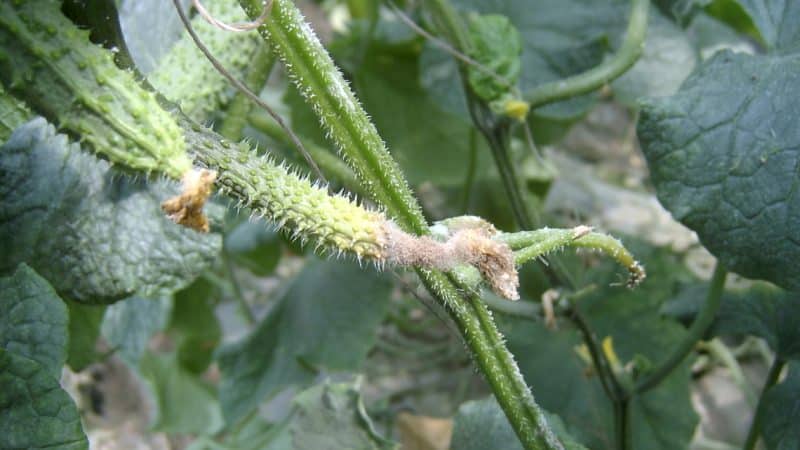
Rots vary in color, location and cause of occurrence. Rot happens:
- White. It appears at any phase of cucumber development. The affected parts of the plant become covered with a white, cottony, weeping coating and dry out. If the fungus develops inside the stem, the entire infected cane becomes covered in mucus.
- Gray. It affects all parts of the plant, including the roots. The first signs of the disease appear in the form of light brown, slippery, blurry spots on the stems and leaves. Subsequently, the infection spreads to the ovary. Young fruits become covered with a gray fluffy coating, soften, become watery and flow.
- Brown. Brown spots appearing on young fruits. As the fruit grows, the size of the spots increases, covering the cucumbers with a swamp-green coating.
- Black. Round black spots appear on the stems, which turn brown as the infection progresses and eventually turn white.
- Root. The first “bell” that the cucumbers are sick with root rot will be a strong drooping of the cucumber vines, as if the crop is very thirsty. If you scrape the soil away from the root collar with your hand, you will see a thin brown stem at the base with signs of rotting roots.
- Summit. Affects young ovaries and fruits. Appears in the form of single gray or brown dry spots on the fruits, which, growing, turn into a continuous thick dark gray pubescence. Over time, the plaque completely covers the fruit, which becomes watery and soft. The plants themselves stop growing, the leaves begin to wither, curl and dry.
Most often, rot is caused by various types of fungi. But there are also those that arise due to plant damage by pests.
Leaves, ovaries, small cucumbers rot
If the stems, ovaries or even small cucumbers are covered with a gray or whitish fluffy coating, and brown or gray spots of irregular shape appear on the leaves, then we are dealing with rotting processes. You should not make hasty conclusions without accurately identifying the pathogen and understanding how and where it came from on the plants.
Causes of rotting of greenhouse cucumbers
So, why do cucumbers rot in the greenhouse and what to do? Many pathogens enter through contaminated soil and planting material. If preventive treatments against fungal diseases and molds have not been carried out in the greenhouse for a long time, then even the walls can be the source of infection.
Diseases
Most rots of greenhouse cucumbers are caused by fungal and bacterial pathogens.The main source is unharvested infected parts of plants of the Cucurbitaceae family. At high humidity, the disease develops faster.
Dampness and cold are ideal conditions for the spread and development of fungal spores. Pathogens begin to multiply, capturing more and more lashes and fruits. Another problem is that in greenhouse conditions it is impossible to place plants far from each other due to limited space.
Root diseases:
- Blackleg. The disease is dangerous for seedlings. This is a complex disease, involving several pathogens: fungi, bacteria and viruses. The root collar changes color from green to dark green and becomes wet, after which the stem becomes thinner and the seedling lies down. The cause of the disease can be drafts, contaminated soil or seeds.
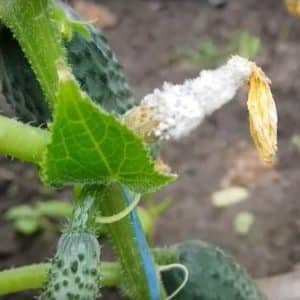
- Fusarium wilt. The disease begins with rotting roots. Outwardly, this manifests itself as severely drooping leaves and lashes. Withering occurs at lightning speed. Sometimes cucumbers die within 12 hours. Infection occurs when mycelium penetrates into small cracks, wounds on vines and leaves.
- Root rot. It is caused by several pathogens: Pythium debaryanum, P. ultimum and P. aphanidermatum. The latter is dangerous not only for the Pumpkin family, but also for the Solanaceae and Legumes.
Rot of cucumber shoots and leaves:
- Sclerotinia or white rot. A fungal disease caused by a fungus of the genus Sclerotinia sclerotiorum. This infection is curable only in the initial stage, when a white coating resembling cotton wool appears.
- Gray rot. The culprit of the disease is the fungus Botrytis cinerea. Often, a secondary infection, brown spot, develops on a cucumber affected by gray rot.
- Ascochytaosis. Black mycospherella stem rot of cucumber. Only weak plants are affected. Leaves and fruits may also rot on an infected plant. The fruits turn brown and become wet. The pathogen persists in seed material, weeds and on the walls of greenhouses.
Reference. The only rot that begins to spread from the fruit is blossom end rot. If the disease is not treated, the roots and growing point of the cucumber rot. Fattening, overfed plants are susceptible to blossom end rot.
Pests
Not only fungi and molds, but also numerous pests can cause rot on cucumbers. By damaging the tissues of stems, leaves and fruits, insects suck the juices out of cucumbers. Plants become weak, and damaged areas, like open wounds, attract fungi and bacteria.
The main greenhouse pests of cucumber that can cause rot: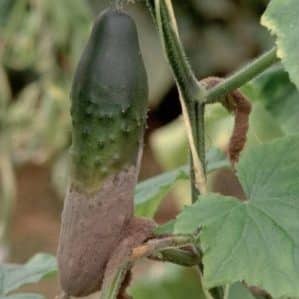
- Bakhchevaya aphid. This small pest inhabits the underside of leaves, shoots and growing points. It comes in green and black. Ants contribute to the spread of aphids.
- Greenhouse whitefly. Small white butterflies lead a hidden lifestyle. If you shake the plants, the insects flutter and fly. Where the whitefly has visited, whitish inclusions remain.
- Tobacco thrips. In appearance it resembles small, oblong-shaped, white and gray bugs. It is easy to notice a small insect by the strokes and dashes on the upper side of the leaf, which it leaves while sucking the juices from the plant.
Unfavorable environmental conditions
In a greenhouse, climatic conditions are created artificially. Whether they will be ideal or unfavorable for the development of the crop depends on the gardener.
The following conditions contribute to the spread and development of rot:
- air temperature below +18°C;
- high humidity in the absence of ventilation;
- insufficient lighting;
- high acidity of greenhouse soil.
Agrotechnical errors
Severe violation of cucumber care measures can become a predisposing factor for the occurrence of rot. With poor care, plants grow weakened and lag behind in development. It is easiest for pathogens to “overcome” such a crop.
We list the main mistakes in care that can contribute to the formation of rot: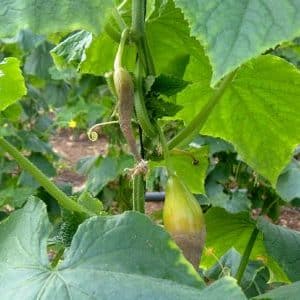
- untreated soil;
- watering with cold water;
- overdrying or overwatering cucumbers;
- unremoved parts of diseased plants;
- dirty glass and walls;
- excessive application of nitrogen fertilizers or manure;
- lack of nutrition;
- lack of preventive treatments;
- non-compliance with crop rotation;
- thickened planting of bushes;
- very deep landing.
What to do, how to save the harvest
As soon as putrefactive processes on cucumbers are discovered, it is necessary:
- Reduce watering and irrigation activities.
- Adjust the air temperature. If it’s cold, then increase to 22°C. If it’s hot, provide ventilation, whitewash the roof or shade it with non-woven material.
- Use complex chemicals to combat. There may not be enough time to find the exact cause. Most rots spread within a few days and sometimes hours.
Important! Do not neglect the use of chemicals! Sometimes the refusal of “chemistry” has a disastrous effect on plantings. Popular measures of struggle are powerless in many situations.
How to treat cucumbers for rot
The market offers a wide range of chemical fungicides with systemic, complex action on several types of fungi at once.
A universal action plan to resolve the problem:
- Any rot is treated with a complex fungicide (“Topaz”; “Oxyx”). The drugs are dissolved in 10 liters of water.
- Every other day, white rot is lubricated with a mixture of “Sumilex” and “Rovral”, preparing a water mash from them.
- Carry out thorough disinfection of greenhouse soil, glass and structures with the “HOM” preparation.
Attention! 3-4 days after treatment, feed the cucumbers with phosphorus-potassium fertilizer. Phosphorus and potassium will help damaged tissues restore strength and increase cucumbers’ resistance to infection.
Preventive measures to prevent the problem
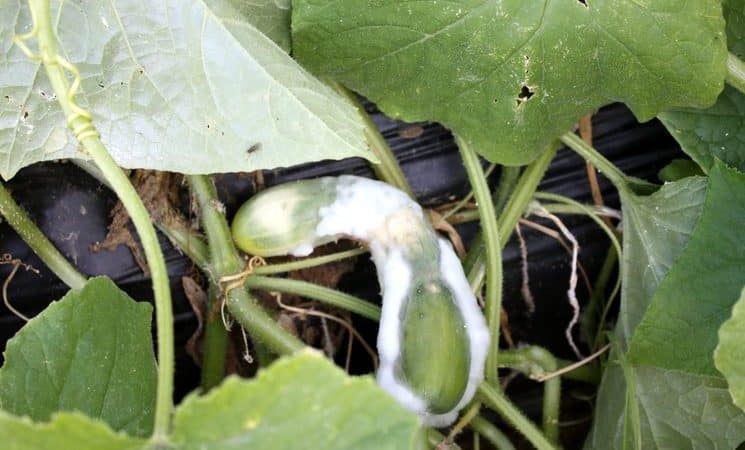
Preventive methods of combating rot are no less effective. It is much easier to prevent a disease than to fight it. Prevention measures consist of the use of special biological, chemical protective measures and agrotechnical measures on healthy plants:
- compliance with crop rotation: do not plant cucumbers after any melons, tomatoes and peppers, as they have similar diseases;
- selection of varieties and hybrids resistant to rot and associated diseases;
- watering with warm water in the morning;
- immediate removal of affected plants;
- replacing greenhouse soil every three years;
- treating the soil in the greenhouse with a strong solution of copper sulfate;
- annual application of the biological product “Trichodermin” to the soil;
- annual spring pre-sowing treatment of greenhouse walls with the preparation “HOM”;
- treating seeds with the drug "Tiram" or purchasing ready-treated seeds;
- one-time spraying of cucumber plantings with Planriz or a 0.1% solution of Euparen-multi in the phase of three true leaves.
Advice from experienced gardeners
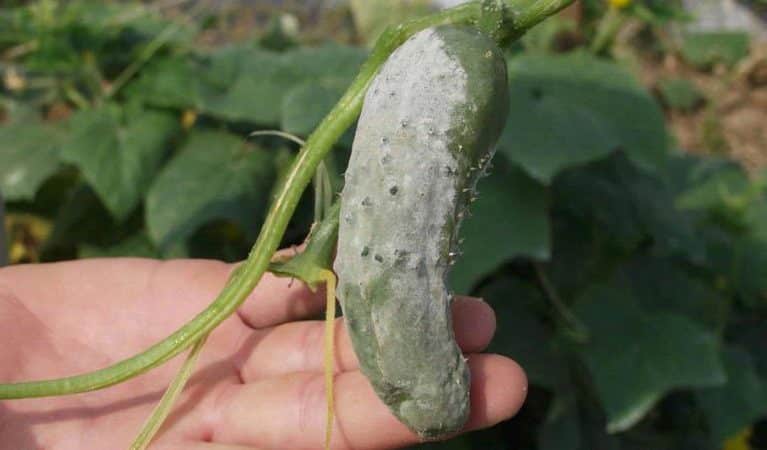
Gardeners, long ago growing cucumber crops, They know about the problem of rot firsthand. Their many years of experience will help you successfully grow cucumbers in a greenhouse and reap a rich harvest:
- Arrange regular ventilation of the greenhouse.
- Grow cucumbers on a trellis. Tethered vines will be easier to inspect for fungal infection and to care for plants.
- Pinch the cucumber stems above 5-6 leaves, leaving the side ones for further growth. Properly formed vines will produce a bountiful harvest and will be strong and healthy.
- Be sure to carry out insect repellent treatments and do not damage the plants when caring.
- Do not pour cucumbers, and then glaze loosen the soil.
Conclusion
Early detection of any rot is the most important condition for successful therapy. However, prevention is always better than cure. But if the disease is already active, do not neglect chemicals - literally every hour is expensive. Using tips and treatment recommendations, you can save your plants and reap the desired harvest.
I use wood ash. I apply it with a brush to damaged areas, rotten fruit or trunk. Works efficiently. I use pollination of bushes with ash.